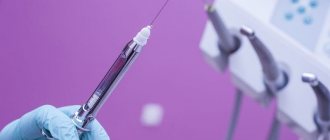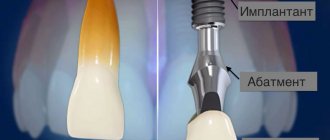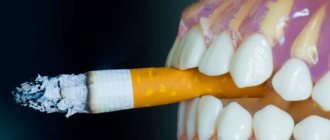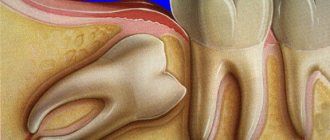Dentistry is not only about hygiene procedures and getting rid of caries. Diseases of the teeth and gums can be so serious that doctors have to resort to extreme measures - surgery. After such operations, the doctor applies stitches.
Patients do not need such treatment as often as plaque removal, fillings, teeth whitening and dentures. But even dental implantation involves the application of postoperative sutures. Proper oral care and knowledge of the procedure for getting rid of suture material will help avoid infection and infection.
When is suturing necessary in dentistry?
Surgical intervention is performed if:
- cystectomy - removal of a medium to large cyst that extends over several dental units. Resection of the apex of the previously sealed roots occurs;
- cystomy - partial removal of the cyst in order to reduce the pressure inside the formation and its gradual flattening;
- eliminating certain inflammatory processes - opening abscesses, treating osteomyelitis, periodontitis;
- gingivectomy - excision of overgrown gum tissue;
- gingivoplasty - tissue transplants to improve the aesthetics of the gums;
- removal of dental units - resection of a wisdom tooth is especially often accompanied by suturing;
- preparation for prosthetics - alveoloplasty, sinus lift, bone block transplantation.
A deep incision in the soft tissues of the oral cavity always requires sutures.
Types of suture material
Material for suturing is divided into two large groups - absorbable and non-absorbable.
Absorbable suture materials include:
- catgut is a thread obtained from purified connective tissue; when left in the oral cavity for a long time, the possibility of an inflammatory process arises due to rejection of the material;
- vicryl - synthetic threads containing polyglycomic acid, polyclatin, do not provoke the development of inflammatory processes, which makes it possible to use them where there is a high risk of postoperative complications.
Non-absorbable suture material:
- monofilament - a synthetic thread with a rigid structure that can injure the mucous membrane;
- silk is an elastic, durable material, but requires timely removal of sutures (after 10 days it causes inflammation of the soft tissues);
- polyster is a durable woven thread that requires special care when fixing; in order to make it more smooth, it is often coated with silicone.
Sutures in implantology for beginners
Since dental implantation damages soft tissues, it is important for a good implantologist to know all the intricacies of suturing after implant installation.
As you know, in dentistry several types of materials are used for suturing after surgery. They are divided into absorbable and non-absorbable. All materials have different origins and some are not suitable for sutures after implantation. Why? Find out further in the article!
Absorbable suture materials include catgut, dexon and vicryl.
Catgut is considered a classic natural suture material because it has been used in dentistry for over 150 years. As a rule, sutures made of this material remain in the oral cavity for up to two weeks. To properly tie a catgut suture, you will need both surgical and regular knots. This material is resorbed through phagocytosis and the action of enzymes.
When using this material, it is worth remembering that it can cause inflammation of the soft tissues, since it consists of foreign proteins. For this reason, catgut should not be used during dental implantation and tissue transplantation, because the inflammatory reaction can negatively affect the result of the operation.
Synthetic absorbable materials include Dexon and Vicryl. These materials have different origins: dexon is made from polyglycomic acid, and polylactin is used to make vicryl. Despite the fact that both materials are much easier to tie than kergut, when working with them you cannot do without surgical sutures.
The resorption of these materials is facilitated by hydrolysis, which is completed in about a month. Both materials are suitable for dental implantation because they do not cause inflammatory reactions. It is important to note that sutures must be removed no later than 10 days after surgery.
Non-absorbable suture materials include silk, braided polyester and monofilament sutures.
A frequently used non-absorbable suture material is silk. This material is made from silkworm proteins. This is a very convenient material to use for both the doctor and the patient. In addition, knots made of silk material are famous for their strength. Such threads are removed from the wound on days 5–7 of rehabilitation. The only disadvantage is that this material causes inflammation of the mucous membrane. Because of this, it is practically not used for alloying vessels, fixing flaps and bone grafts.
Woven polyester threads have the same positive properties as silk, but do not cause inflammation. Often, such threads are coated with polytetrafluoroethylene, silicone or polybugylate.
Monofilament threads consist of polytetrafluoroethylene. This thread has good mechanical properties and does not cause inflammatory reactions. This type of suture material is used for attaching periodontal membranes because it is suitable for prolonged contact with the mucous membrane. The only drawback of this material is the rough ends of the thread, which can damage the mucous membrane. To prevent damage, a bandage is applied after suturing using monofilament suture.
In the following article you will learn a lot of useful information about both needles and the types of sutures that are used for dental implantation.
Main types of sutures in dentistry
The most commonly used seams are:
- single - used for minor incisions in the soft tissues of the patient’s oral cavity;
- nodal - a reliable way to fix the edges of the wound;
- supporting - used when flaps (buccal, lingual) are located at different levels;
- continuous - its advantage is good adaptation of the wound edges and is highly aesthetic.
Instruments used for suturing in dentistry:
- needle holder - there are many models of the instrument, the choice depends on the preferences of the surgeon;
- two-pronged hook, eye surgical tweezers - necessary for maintaining the edges of the wound;
- eye scissors - needed for cutting suture material;
- suture needles - made of medical stainless steel, having different sizes, shapes, diameters.
Proper suturing in the oral cavity
This article was born in connection with the story of one patient who visited me for a consultation. Three days ago, a woman received a cut injury to the lateral surface of her tongue when she was grinding her teeth for a metal-ceramic prosthesis.
Her attending physician, for some reason understandable only to him, used a separation disc for his work. He, of course, treated and stitched the wound, but the stitches became inflamed and came apart. I would like to understand the situation and find out why this happened.
Upon closer examination, it became clear that the stitches were uneven, too tight in some places, the edges of the wound were poorly aligned with each other, in general, the work was worthless.
Therefore, I would like to once again remind my fellow dentists of the rules and methods of non-traumatic suturing and explain once again how, why and why this is done. First, let's decide on the set of tools needed for suturing.
- Needle holder. Among their wide variety, needle holder-scissors should be highlighted. It will be the most convenient for the dentist, as it allows you to do without the help of an assistant. — Eye surgical tweezers. They will comfortably hold the edges of the wound. Remember that you need to fix it from the inside, by the submucous membrane. This will help prevent the tool from slipping and falling off. — A small two-pronged hook. This is a very useful tool that will be convenient for fixing the edges of the wound when inserting a needle from the outside and withdrawing it from the inside to the surface. - Eye scissors. Indispensable when cutting suture thread, especially if you do not use a needle holder-scissors. Now about the suture material. For suturing the mucous membrane, synthetic threads 4-5 nil thick are most suitable.
It is very difficult to carry out operations in the facial area and in the oral cavity due to insufficient space for free manipulation. Now we will remember how to properly apply sutures and tie knots in this limited space, but first we will formulate the basic principles of atraumatic surgery.
Under no circumstances should the edges of the wound be grasped with anatomical tweezers. They must be secured with a two-pronged hook, between the teeth of which a puncture is made. The needle should be inserted at a sufficient distance from the edges of the cut to avoid excessive tissue tension when they come together.
When comparing the edges of the wound, make sure that they are in fairly close contact with each other, and at the same time be at the same level.
If one edge of the mucous membrane overlaps the other when a suture is applied, subsequently a rough scar may form in this place or the suture may even diverge. If you are treating a fairly deep wound, sew up the tissue in layers. Absorbable suture material should be used for suturing the lower layers.
When working in the oral cavity, the edges of the wound should not be pierced simultaneously, but each one in turn (according to the “puncture” pattern). This will help avoid excessive tissue tension and possible injury due to “cutting” of the seam.
It is imperative to tie knots on the sutures with the help of tools: firstly, there is not enough space in the oral cavity to work with your hands, and secondly, this significantly reduces the consumption of very expensive suture material.
Now I will describe in detail how to correctly perform a simple interrupted seam. 1. We pierce successively both sides of the wound at a sufficient distance from the edge, stretch the thread until a short end of one to one and a half centimeters remains. 2. Hold the long end of the thread together with the needle in your left hand, then wrap it around the needle holder clockwise twice. 3. Grab the short end of the thread with a needle holder and pull it through the loop formed on it. This should be the first part of the knot. 4. Carefully tighten the knot, gradually bringing the edges of the wound closer together. Don't worry, the double loop will keep it from coming undone. 5. Holding the needle with the long end of the thread in your left hand, wrap it around the needle holder again, but counterclockwise and once. 6. Tighten the fully formed knot, ensure the uniform tension of the thread, and check that the tightened edges of the wound are in the same plane. 7. Move the knot from the cut line. 8. Cut the end of the thread to the required length. That's all, actually: the stitch is applied.
Let me also remind you that stitches should be applied from the middle of the wound with not too frequent stitches, so as not to disrupt the blood supply to the tissues. To ensure stable healing, especially if the wound is of traumatic origin, it would be a good idea to leave glove drainage between the stitches for two to three days.
Prevention of complications after suturing
It is important to complete the medication prescribed by your dentist.
The following will help speed up and relieve pain from wound healing:
- applying cold on the first day for 10-15 minutes helps relieve swelling and reduces the risk of bleeding;
- baths with antiseptics - rinses, herbal decoctions with antimicrobial, anti-inflammatory properties;
- Three days after surgery, you can clean the suture material with a soft toothbrush.
After surgery it is prohibited:
- take aspirin and other anticoagulants - they thin the blood and can cause bleeding;
- eating hard, spicy foods can damage soft tissues and cause irritation;
- carry out warming procedures - heat compresses, visiting saunas, baths leads to inflammatory processes;
- rinse your mouth - active rinsing of the mouth is prohibited until the stitches are removed;
- active physical activity.
A visit to a dental surgeon is a prerequisite for preventing and timely eliminating the causes that contribute to the occurrence of postoperative complications.
How are stitches removed?
The day for suture removal is determined by the attending physician. As a rule, this occurs after 7 days from the date of the procedure. For simple operations, the dentist removes the threads earlier. It's okay if the patient doesn't come that day. The suture material may remain in the gum for a long time, but the tingling sensation during healing will remind you to visit a doctor. In some operations, special threads are used that do not require removal; they dissolve on their own within 2 weeks after application.
Sutures during dental operations are applied without tension and the procedure for getting rid of them is not too painful. Duration - about 10 minutes. The gums return to their normal state 1-2 days after the threads are removed.
Add a comment
Leave your comment
How does the procedure work?
The suture should be applied from the side of the moving edge of the wound towards the fixed one. The free edges of the tissue flap must be carefully held with special anatomical tweezers. In the process of suturing the skin and mucous membranes, the needle grasps the flap from the edge of the wound by about 3 mm, and then the wound is tightened along the edges with the ends of the suture material, tightening the loops.
It is very important that this procedure is done professionally; mistakes and carelessness are unacceptable. For example, you should not tighten the knot too much, as this disrupts the blood supply at the edges of the wound, as a result of which the tissue quickly turns pale at the suture site. However, it is also unacceptable for the seam to be too loose.
When to remove stitches
Sutures can be removed approximately 10-15 days after surgery, depending on the extent of the intervention and the condition of the soft tissues. In rare cases, the healing process can last up to 3-4 months, especially if patients do not comply with doctor's instructions. Also, recovery may be delayed due to the presence of chronic diseases that affect the ability of tissues to regenerate.
Modern clinics are increasingly giving preference to innovative threads that can dissolve on their own. But sometimes you have to use products that need to be removed after some time using the classical method. The procedure is virtually painless, but much depends on the pain threshold of a particular person.
A true professional will remove the thread easily and quickly, so the patient will feel almost nothing. The unpleasant sensation may appear later and will persist for several days or less. You should go to the clinic when the pain becomes too severe and blood begins to flow from the wound.
Seam removal and post-processing
If the wound healing process proceeds normally, then already on the seventh day it is possible to perform an operation to remove the sutures. This is a simple procedure; special surgical threads are simply removed using surgical tweezers, sharp scissors, or a special suture cutter.
You need to grab the knot with tweezers, and then simply cut one side of the seam. Carefully remove the suture material from the tissue. In modern dentistry, materials are often used that dissolve themselves and do not need to be removed at all. Some remnants of materials from the wound can also be removed later using a chlorhexidine solution (if necessary).
When are stitches placed?
Procedures involving dental surgery:
- tooth conservation operations;
- removal of a dental cyst;
- implantation;
- removal of tumors;
- plastic maxillofacial surgeries.
Namely:
- alveolotomy - smoothing the sharp edge of the alveoli, which is formed due to traumatic loss of teeth;
- patchwork operations - elimination of gum pockets with cleaning of dental plaque;
- sinus lifting prior to implantation in difficult cases;
- root resection is a tooth-preserving operation;
- and other types;










